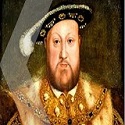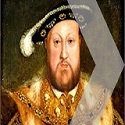Part 47
Thomas Seymour arrived back in England in the new year of 1543. He had calculated that whoever governed not just Prince Edward but Mary and Elizabeth too would inevitably have future governance of the kingdom and so he developed a surreptitious plan to rival his brother Edward’s manoeuvrings.
Eight or nine years earlier, with Cromwell’s connivance, Thomas and Edward had contrived to have their sister Jane seduce Henry and prise the royal sanction from Anne de Boulogne and her family.
At this present time the king was, unusually for Henry, without a wife, and a repeat of the same plan could be even easier to effect, if a suitable woman could be persuaded to snare him again. The problem for Thomas Seymour was that his only remaining sister was already married – to Cromwell’s son Gregory.
So who could be the seductress this time around?
Katherine Parr had been born in 1512 and was the eldest surviving child of Sir Thomas Parr of Kendal in Westmorland and Maud née Green, daughter and co-heiress of Sir Thomas Green of Greens Norton, Northamptonshire.
She had been married twice before, first in 1529 to Edward Burgh, the son of Thomas Burgh, third Baron Burgh of Gainsborough in Lincolnshire. He had died in 1533 in his mid-twenties. Katherine’s second husband was John Neville, third Baron Latimer of Snape Castle, Yorkshire, although she had spent most of their marriage at his manor in Wick, Worcestershire. However, about the time Thomas Seymour returned home, Katherine acquired a position in the household of Princess Mary as one of her ladies in waiting.
On 2 March 1543, the forty-nine-year-old Lord Latimer died. Katherine was but thirty years old, intelligent, attractive, staunchly evangelical and now a widow. Usefully, she was also a kinswoman of Bishop Cuthbert Tunstall.
Thomas Seymour was something of a swashbuckler, a renowned heroic archetype: chivalric and ready to rescue a damsel long deprived of love, romance and physical affection. A swashbuckling type that a damsel such as Katherine Parr might find attractive.
He promised his hand, to marry her after the king died, but first he would pimp her to Henry VIII.
Eight or nine years earlier, with Cromwell’s connivance, Thomas and Edward had contrived to have their sister Jane seduce Henry and prise the royal sanction from Anne de Boulogne and her family.
At this present time the king was, unusually for Henry, without a wife, and a repeat of the same plan could be even easier to effect, if a suitable woman could be persuaded to snare him again. The problem for Thomas Seymour was that his only remaining sister was already married – to Cromwell’s son Gregory.
So who could be the seductress this time around?
Katherine Parr had been born in 1512 and was the eldest surviving child of Sir Thomas Parr of Kendal in Westmorland and Maud née Green, daughter and co-heiress of Sir Thomas Green of Greens Norton, Northamptonshire.
She had been married twice before, first in 1529 to Edward Burgh, the son of Thomas Burgh, third Baron Burgh of Gainsborough in Lincolnshire. He had died in 1533 in his mid-twenties. Katherine’s second husband was John Neville, third Baron Latimer of Snape Castle, Yorkshire, although she had spent most of their marriage at his manor in Wick, Worcestershire. However, about the time Thomas Seymour returned home, Katherine acquired a position in the household of Princess Mary as one of her ladies in waiting.
On 2 March 1543, the forty-nine-year-old Lord Latimer died. Katherine was but thirty years old, intelligent, attractive, staunchly evangelical and now a widow. Usefully, she was also a kinswoman of Bishop Cuthbert Tunstall.
Thomas Seymour was something of a swashbuckler, a renowned heroic archetype: chivalric and ready to rescue a damsel long deprived of love, romance and physical affection. A swashbuckling type that a damsel such as Katherine Parr might find attractive.
He promised his hand, to marry her after the king died, but first he would pimp her to Henry VIII.


